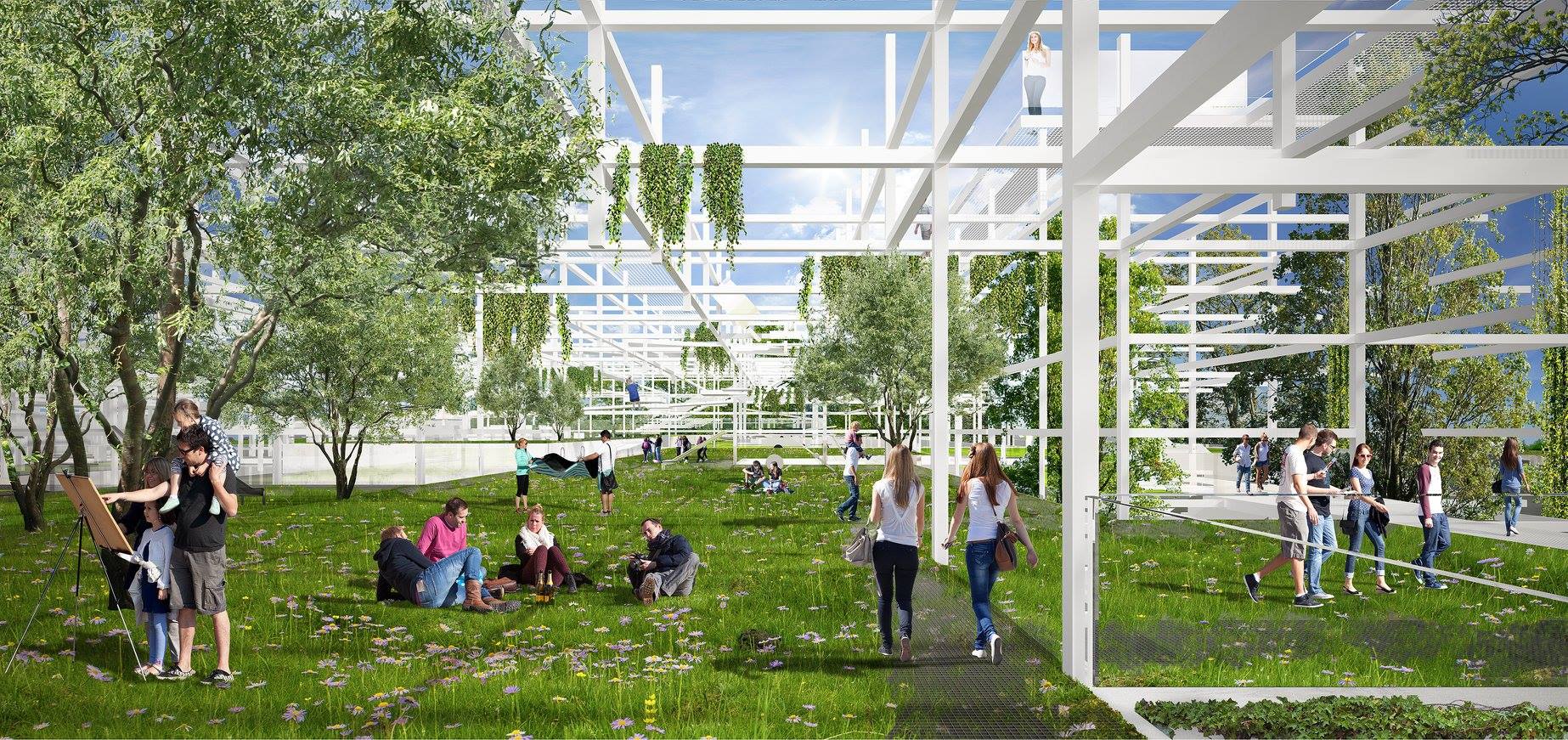
OVO Grąbczewscy Architekci’s stacked garden-like proposal has been awarded third place in a competition for the new Małopolska Science Center in Krakow, Poland. The competition brief asked for the design of an innovative cultural institution with an iconic architectural form that would represent creativity, openness and independent thinking. As a reflection of both the city and the region, the center is also intended to provide a model for sustainable construction, energy efficiency, and education that inspires immersive visitor engagement.
See the complete design below.
The 25 meter-tall structure is clad in a grid of pillars and terraces enveloped with living greenery. This vegetal facade is envisioned to constantly change during the seasons and the building’s lifespan. Situated in a meadow flanked by the Polish Aviation Museum and the Kraków-Rakowice-Czyżyny Airport, the architect’s proposal conceives the new Małopolska Science Center as a sustainablesynthesis of architecture and nature; between building and garden.
Beyond the gridded facade, which also extends across the roof, the four-story interior of OVO Grąbczewscy Architekci’s design is structured around four tower-like masses that frame a central courtyard. Exhibition spaces are dispersed across all three floors alongside generous theaters, classrooms, interior gardens, a cafe, restaurant, and administrative spaces. These various programs are stacked and offset, linked by bridges or walkways, to create a “composition of interpenetrating modules.”
A network of external ramps, balconies, and terraces connect allowing visitors to circulate within the facade. The steel-grate paths further provide visual communication between floors and spaces to emphasize the “flexible system” linking the areas—both horizontally and vertically. The rooftop is reserved for a recreation zone including an educational playground, meteorological garden, renewable energy garden, and picnic spaces.
The design also takes into consideration the ecological impact of the new center. Aside from aesthetics, the living envelope provides natural shading in warmer months while creating a buffer to stabilize temperature and humidity within. The organization of atriums, patios, and terraces allows for natural ventilation and natural light to penetrate deep into the space. Low-parameter heating and cooling through a thermo-active slab system are complemented by glazed walls and the high thermal insulation of the flat roof to achieve maximum energy efficiency.
Avots: Arch Daily